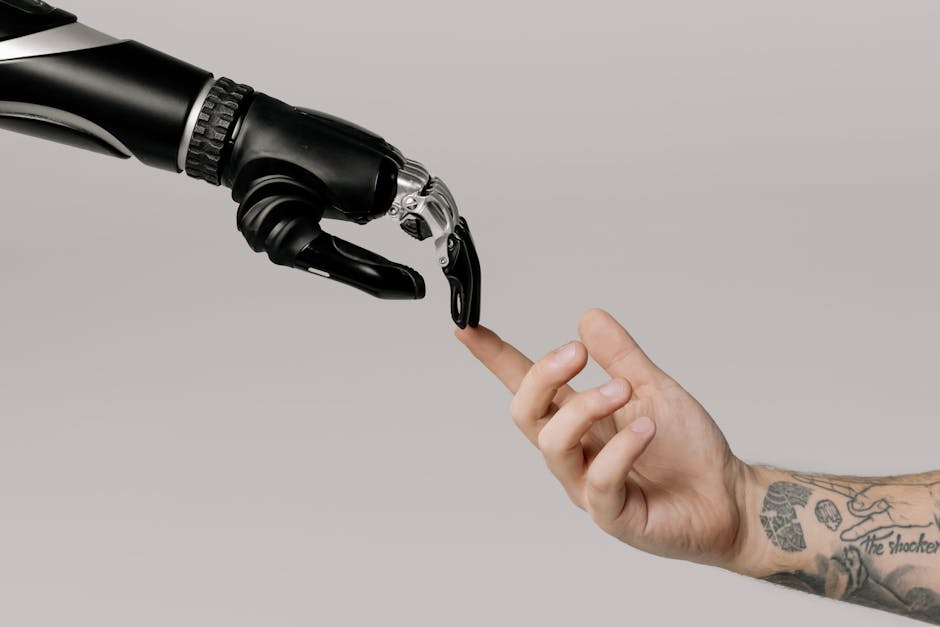Synesthetic Gadgets: Explore Innovative Multisensory Tech Today
In an increasingly digital world, engaging multiple senses through technology is transforming the way we learn, create, and experience life. Imagine a classroom where students don’t just read about historical events but also feel the rhythm of a drum as they explore ancient cultures or hear the atmospheric sounds of a rainforest while studying ecology. This is the promise of synesthetic gadgets—technology designed to stimulate more than just sight and sound, leveraging a multisensory approach to enhance cognitive processing and engagement. As we navigate through this fascinating evolution of tech, we'll uncover innovative gadgets that harness synesthetic design principles, evaluate user experiences, and explore their application across various fields from education to professional environments.
Understanding Synesthetic Gadgets and Their Impact
The term “synesthetic” derives from synesthesia, a neurological condition where stimulation of one sensory pathway involuntarily leads to experiences in another. While most of us may not literally see sounds or hear colors, the principles of synesthesia can inform tech design for enhanced interaction. By engaging multiple senses, synesthetic gadgets tweak the traditional learning paradigm, creating immersive experiences that enhance understanding, creativity, and memory retention.
Take, for instance, the rise of haptic feedback gadgets. Devices that provide tactile responses allow users to "feel" actions or feedback digitally, creating a more engaging user experience. With such advancements, educators can transform traditional lessons into vibrant, multisensory experiences that appeal to a range of learning styles.
The Latest in Synesthetic Technology
1. Haptic Feedback Devices
Haptic feedback isn’t merely a benefit; it’s an expectation for a modern tech experience. Devices like the HaptX Gloves allow users to touch and feel objects in virtual environments, making technology feel more real and tangible. Students can interact with virtual 3D models of anatomical structures in biology or manipulate art pieces in a digital museum. The possibilities are endless, as users reimagine learning without the limitations of traditional media.
Whether in gaming, virtual reality, or professional simulations, haptic applications are wide-ranging. A recent study from Harvard Business Review shows that incorporating haptic feedback into training modules can increase retention rates by up to 30%, providing convincing evidence for their place in both education and industry.
2. Aroma-Dispensing Gadgets

Imagine studying the properties of herbs while also inhaling their scents. Aroma-dispensing gadgets like the Aroma Shooter or Scentsys offer multisensory learning opportunities by linking olfactory stimulation to educational content. Whether in a culinary course or a biology class focused on plant reproduction, these gadgets enhance memory associations and enrich the experience.
3. Interactive Soundscapes

Innovative audio technologies like the Sonic Eye, which combines sound, vibration, and visualization for an immersive learning experience, can bridge gaps in education and therapeutic settings. These devices are especially beneficial for individuals with auditory processing difficulties or learning disabilities, allowing sensory integration that fosters communication and learning.
Should you wish to delve deeper into how immersive audio can influence mood and productivity, explore our article on immersive audio gadgets.
4. Visual & Tactile Learning Tools

The education sector has embraced gadgets designed to engage visual and tactile senses. Products like Tangible Media's Responsive Environment allow users to interact with physical objects to manipulate digital information seamlessly. This hands-on approach enhances understanding of abstract concepts by making them physical and thus easier to grasp.
Experts have found that kinesthetic learning—learning through experience and doing—can drastically improve comprehension for many learners. For those exploring unique ways technology impacts learning styles, terms like interactive learning and experiential education are today’s essentials.
User Experiences and Real-World Applications

While innovative technology captures attention, it’s the user experiences that truly validate the design. Educational institutions running pilot programs with synesthetic gadgets are seeing genuine improvements in engagement and outcomes. Students report heightened motivation and enjoyment when learning with multisensory tools, claiming these tools make complex subjects more relatable and fun.
Case Study: Enhancing Language Learning

One compelling example is a language learning program that incorporates explicit synesthetic design. By using a combination of visual prompts, auditory cues, and even taste experiences (through culture-centric food tastings), students not only learn vocabulary but also develop emotional connections to the language. Feedback from administrators indicates a noticeable improvement in fluency and comprehension among learners.
Professional Settings: Elevating Collaboration and Creativity

The benefits aren't confined to education alone. In professional settings, teams using multisensory tools report increases in creativity and collaboration. For instance, companies experimenting with tactile brainstorming sessions that incorporate sensory inputs (like textured materials or soundscapes that match themes) found new levels of ideation and problem-solving.
Explore how organizations can harness multisensory tech with insights from our blog post on future gadgets in creative workspaces.
Synesthetic Design Principles in Action

Embracing a synesthetic approach involves a deliberate strategy that goes beyond merely adding features. The principles of synesthetic design include understanding user needs, employing natural interactions, and creating seamless experiences across senses. Here’s how some manufacturers are implementing these design principles into their gadgets:
1. Integrative Interactivity

Producing devices that allow users to engage on multiple sensory fronts encourages deeper interaction. For example, smart home systems can be programmed not just to react to voice commands but also adapt to user emotions sensed through biometric feedback.
2. Contextual Sensory Triggering

Innovators are blending contextual awareness into tech. For example, a learning environment that adapts lighting and sound based on the subjects being studied can enhance focus and mood. These smart systems are paving the way for advanced personalized learning environments.
3. Inclusive Design

Ensuring these gadgets cater to diverse populations—including those with disabilities—expands accessibility. For instance, visual aids triggered by sound can help visually impaired users engage with learning modules, creating a more inclusive tech landscape.
Potential Applications Across Various Fields

While the education sector is pivotal in adopting synesthetic tech, the applications extend far beyond. Here are several sectors that stand to benefit from this innovative approach:
Healthcare

Engaging senses can aid in patient recovery, providing therapeutic experiences that comfort and motivate. For instance, using aromatherapy combined with relaxing soundscapes is employed in psychological therapy and patient recovery environments.
Entertainment

The entertainment industry is no stranger to multisensory experiences. Virtual reality games that immerse players fully into diverse worlds often utilize haptic feedback and spatial audio to create engaging experiences. This technology not only enhances enjoyment but also promotes storytelling as an experiential journey.
Marketing

Retailers are beginning to leverage multisensory principles in their marketing strategies, recognizing that experiences rise above mere transactions. Utilizing aroma and sound schemes in stores can evoke emotional responses, leading to stronger connections with products and brands.
To explore the intersection of marketing and sensory tech, check out our insightful post on neurotechnology in today's marketing landscape.
The Future of Synesthetic Gadgets

As we look to the future, it's clear that synesthetic gadgets are positioned to play a pivotal role in how we learn, work, and interact. With advances in AI and biometrics, we can anticipate a new generation of devices that intuitively respond to our emotional and physical states, creating experiences tailored uniquely to each user.
Imagine devices that adapt not only to your commands but also to your mood—changing their lighting, sound, and even functionality to match your needs in real-time. It’s a fascinating landscape that invites us to rethink what our interactions with technology will look like in the years ahead.
The rise of mood-responsive technology, a vital theme in emerging design, will undoubtedly influence emotional wellness, enhancing aspects of life that demand attention. If you're eager for the latest insights on this transformative field, dive deeper into our content on emotional intelligence in gadgets.
Final Thoughts

The virtual realm of technology is not just a different space; it’s an evolving experience that can fundamentally enhance how we learn, interact, and exist. By embracing a multisensory approach to product design, we open doors to fresh ideas, more profound connections, and enhanced creativity. As we continue to witness the unfolding potential of synesthetic gadgets, getting involved with these technologies not only heightens individual experiences but contributes to a collective journey toward more engaging, empathetic, and stimulating environments.
Explore and embrace these advancements as they revolutionize traditional definitions of engagement, creating richer path for learning and connectivity across multiple realms. The future is bright, sensory-aware, and palpably exciting.






